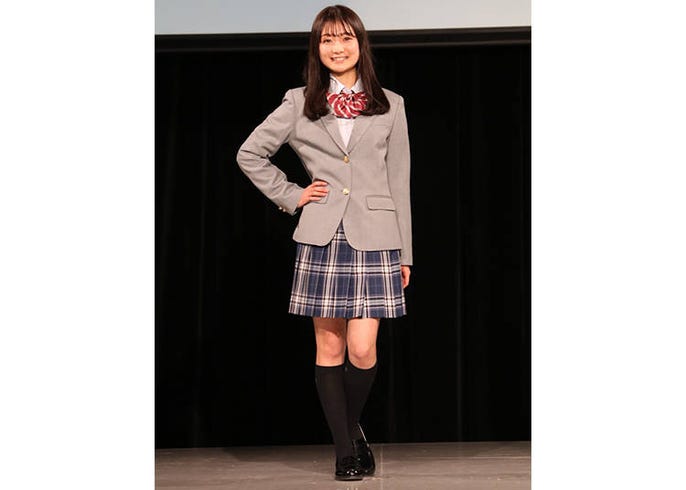Some Ideas on Japanese Uniforms You Should Know
Wiki Article
7 Easy Facts About Japanese Uniforms Described
Table of ContentsNot known Facts About Japanese UniformsThe Best Guide To Japanese UniformsThe smart Trick of Japanese Uniforms That Nobody is DiscussingAll about Japanese UniformsThe Best Guide To Japanese Uniforms
In Setagaya, new female junior high students can put on pants as soon as their colleges make the proper preparations. In April 2015, the education and learning ministry asked colleges throughout Japan to show factor to consider for their trainees, including by permitting them to use the uniforms of their self-identified sexes. However, just like western media, there are stories in anime that are based upon real-life events too. Trainees are typically prohibited from driving to college. While taking public transport, they are frequently needed to stand, in order to leave seats open up for elderly or impaired people - no word on what is anticipated from disabled pupils.
Trainees are typically prohibited from driving to college. While taking public transport, they are frequently needed to stand, in order to leave seats open up for elderly or impaired people - no word on what is anticipated from disabled pupils.This is in the name of public safety and security. This example commonly doesn't come up in anime, given that character's connections with their schoolmates are normally considered more vital than parental ones, and there's nothing unusual about walking to college or taking mass transit. Still, some of these prohibitions may come as a surprise.
Also today, a great deal of Japanese intermediate school uniforms have a high collar and are in the seafarer design. There are likewise schools that switch over to blazers, as several go abroad for college trips and the high collar looks too much like an army attire. Originally an uniform for the navy, garments motivated by seafarer attires are currently referred to as school attires for ladies in Japan.
4 Simple Techniques For Japanese Uniforms
 Seafarer Fits. It was in England in the first quarter of the century when someone had the motivation that boys ought to put on seafarers' trousers. English seamen had been clothing in pantaloons because the seventeenth century as well as English children adopted pants a half century prior to their dads did. The collar, additionally called a tar flap, was a holdover from an earlier age when men had long hair that was linked back with tar or oil.
Seafarer Fits. It was in England in the first quarter of the century when someone had the motivation that boys ought to put on seafarers' trousers. English seamen had been clothing in pantaloons because the seventeenth century as well as English children adopted pants a half century prior to their dads did. The collar, additionally called a tar flap, was a holdover from an earlier age when men had long hair that was linked back with tar or oil.
Part of what's so fascinating concerning your inquiry is that this design of health club wear is no more utilized in Japanese colleges. In Japanese society, a technique for recognizing the leader of a team, be it the leader of an Ouendan or a club or group president, is to look for the red armband on the top arm - Japanese uniforms.
In Japan, there is a strong focus on conformity and rules. This can be seen in just how schools are run, where harmony is vital, and there is a great deal of concentrate on discipline. In a culture that values these things, it makes good sense that the colleges would certainly reflect them. When it comes to fashion, Japanese females agree to stand there shivering in the freezing cold.
Simply a decade ago, no person would ever before have actually thought they would see this. The natural hair shade for Japanese people is generally black, naturally. Long, black hair signified charm for females in the Heian duration (794-1192), when Japan developed its very own this link cultural choices. Naturally high college women appreciate their shoes too.
The 5-Minute Rule for Japanese Uniforms
Another new fad is for the girls to wear sneakers with their uniforms. The Japanese have developed a mutual feeling for the periods living in a nation with distinctive adjustments in periods.Wearing red stripes in these shades looks especially maritime.
In this series of lessons, we're mosting likely to be presenting
Japanese Uniforms Things To Know Before You Get This
visit our website Various other regulations being reduced include the practice of penalizing pupils with a kind of house apprehension, and uncertain language in the guidelines on what is taken into consideration "normal of senior high school trainees."The policy modifications go right into result at the beginning of the new school year on April 1. The step followed Tokyo's board of education performed a study in 2015 that asked schools, trainees as well as parents concerning theirviews on the plans.While we all assume that college attires are really basic as well as inconspicuous. That's not the instance with school uniforms in Japan. In this article, let's talk about Japanese institution attires below.
It included a hat, high-collared jacket, and also trousers, we call. Uniforms like this were originally only budget friendly for the prominent Gakushin pupils as elites. This is where the history of the male student attire visit the site comes from., the history of female pupil uniforms in Japan days back to the reforms accomplished by ((1854-1936).
The guidelines vary amongst the institutions. There are laws for nearly all junior and elderly high school pupils in Japan to wear an attire. Public as well as private junior as well as elderly high institutions in Japan mostly need uniforms. All institutions normally have a summertime and winter variation of the attire.
Excitement About Japanese Uniforms
As Japan has 4 seasons within a year, the attire will certainly alter. The information for the items typically come as adheres to: Attire for Summertime: white as well as brief shirt, light trousers for kids or a pleated skirt for women with t-shirt as well as shorts for sports. Unform for Winter season: sweatshirt, sports jacket, lengthy pants or skirts, polyester tracksuits for sporting activities Nowadays the extra we have a look at the transforming of Japanese college attires.Report this wiki page